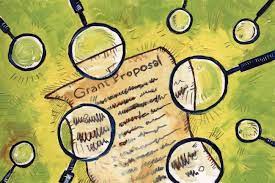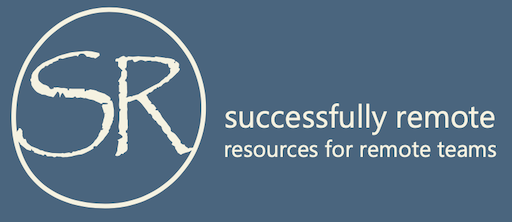A management perspective on developing complex proposals in remote teams

In “Stories from the Workplace,” we share real challenges and solutions that you can apply to your own projects. In this article, we interview Robert Lyons, Proposal Manager, on 3 January 2022
Story background
During an IEEE Professional Communication Society Board meeting in December, Robert (Bob) Lyons commented that the virtual meetings for this Board run much more smoothly than his virtual meetings with proposal teams. He is an engineer and a consultant for companies putting together proposals for government funding. In other words, he manages proposal teams for complex projects and big money. I told him I’d love to meet and discuss his experiences with remote teams. So we did.
To emphasize the importance of online teams’ need to function well, he told the story of a proposal he managed mostly with in-person teams and teleconferencing for ~$35 billion in new aircraft tankers–each new tanker would be produced at a cost of multimillions of U.S. dollars. Developing and producing the several thousand-page proposal and responding to government requests for more information and corrections over most of a year cost ~$100 million. This cost covered a very large multidisciplinary team of engineers, program managers, and experts in manufacturing, supply chains, logistics, testing, security, finance and cost estimation, air transportation, military operations, and more. The team was spread across several countries and facilities. In a strategic competition between the world’s two largest manufacturers of transport aircraft, his team’s proposal was “acceptable and awardable” but lost on proposed price.
Based on the size of the proposal’s scope and the depth of cultural and technical arguments, he saw no possibility of successfully producing this kind of proposal online. He says, “Proposal development and production is a contact sport best orchestrated in purpose-built facilities with live-in teams charged with making the proposal successful.”
Although not many proposals approach the complexity of this one, most are still too complex to do without a large and dedicated proposal teams. Bob says it is “hard as hell to work in Zoomland and produce such complex proposals with such complex teams.” We discussed why this is the case and how the challenges of going online for such projects could be reduced.
First, a few definitions . . .
In industrial settings, the different areas that are stakeholders in such a project are called “functions.” Every function has at least one representative to the proposal team called a “functional lead.” These functional leads have the authority (or know who has) to lead support teams, remove resource impediments, and provide expertise needed to develop the proposal artifacts and those needed to gain company leadership approval of budgets, margins, and technical approach used in the proposal. Every function has different interests. . . a goal for what they want to get out the door. Bob’s job is to facilitate collaboration, integration, writing, and ultimately producing and delivering a winning proposal to the customer.
Challenges to meeting goals
The five following challenges are most significant to Bob’s management of large proposal projects.
Challenge 1. Presence
One of Bob’s strategies when constructing proposals in a face-to-face team is to ensure full engagement from everyone. Team members must be fully present for such high-stakes projects. In other words, the team can’t address complex processes and projects on tight timelines unless every functional lead is fully engaged. Lack of engagement leaves holes, and holes make proposals fail.
Bob explains that it’s easy to judge (based on non-verbals) that a functional lead isn’t fully engaged when he and the team are in a physical room together. He can challenge them back into the task at hand. In addition, the whole team can see holes in proposal documents and artifacts when they are spread, literally, on the walls of the proposal facility. Obvious holes in the documents on the walls mean that someone hasn’t done their proposal job, and peer pressure is often all that’s needed to get that problem solved.
He feels disadvantaged in communicating on these high-priority, complex projects when the team is working online and video is off; he can’t see his team. He says, “If you can’t see the bodies, you can’t read the body language. Lack of video makes it too easy for attendees to remain unengaged.” They go off the proposal project to take care of other job demands, and he can’t stop them. Their day job is what they want to do; the proposal job is often an extra. (Note: Home internet bandwidth is the most often-cited reason for turning cameras off. It’s easy for people still in the plant or offices to join the no camera bandwagon, regardless of available internet bandwidth.)
He needs the team to work in tandem to fill in holes that exist between their many functions. This requires presence of the people and the materials.
Challenge 2. Seeing the whole
In face-to-face sessions, Bob uses what he calls a “Wall of Truth.” A Wall of Truth is a literal wall where all the team-agreed materials are displayed for easy reference. This allows the team to develop one-voice proposal. The rest of the facility’s walls are covered with the evolving proposal artifacts, such as storyboards, annotated page mockups with rudimentary graphics, first and second drafts with production quality art, and final drafts. The wall helps the team envision the entire project and identify holes in information. In this setting, peer pressure forces participants to fully engage.
Challenge 3. Team size
As previously noted, the proposal teams that Bob works with are big, diverse, and geographically dispersed, and so is the scope of the proposals they work on. This makes for very challenging meetings whether online or face-to-face. Attendees come from different types of backgrounds and functions, and they represent diverse and often conflicting interests in the proposal content. Bob refers to this as friction among functionals.
For example, one of the first problems he encounters is diverse language use. That is, attendees might use the same terms but mean entirely different things. He chants, “Use the customer’s words in the customer’s order,” and sotto voce, “no matter how dumb it looks!” The customer’s request for proposal (RFP) provides required parameters, so it is imperative that the proposal be compliant in every dimension and be easy to navigate. The proposal must make it easy for an evaluator to find what they’re tasked to evaluate. It takes a cohesive team to achieve this.
Challenge 4. Getting information out of heads – and sometimes into heads
Graphics and pricing are high priorities for these teams, and getting graphics “out of the heads” and into the proposal is a particular challenge. Training teams to write what needs to be written and substantiated is difficult to get into peoples’ heads. . . . especially proposal tasks unrelated to the regular day job.
Challenge 5. Tech tools
Teams need a diverse choice of software tools both for communicating and for developing the proposal content. These tools are often unavailable from remote locations due to security and other issues. In fact, something as basic as good internet for all players is a real issue, particularly when meetings work best with video so that team members can be fully present.
Strategies for success
As with any complex project, the process of reaching the goal is full of challenges. Bob’s job is to find a way to make it work to get a compliant and compelling proposal that leads to a lucrative contract for his clients and a much needed “thing” to the end users. In the case of large, complex projects managed in remote teams, here are some success strategies that will help counter the challenges described above.
Strategy 1. Two-a-days
Stay in regular contact with the team. Schedule two-a-days where the functional leads and selected team members or stakeholders meet for a short time twice a day to discuss impediments to success, status of the proposal project, and required company leadership approval materials. This allows the whole team to stay close to the project and to resolve many company-approval issues with materials development. The goal and the progress remain in front of the team.
Strategy 2. All-hands meetings
Schedule all-hands-on-deck meetings regularly to keep every function’s people up to date.
Strategy 3. Wall of Truth
Create an online Wall of Truth where all functions can check the approved content and language of various sections of the proposal while their people contribute to and are part of the workflow. Keeping up to date content on the rest of the proposal walls will help identify holes in the information. There are lots of tools out there, like Miro and Google’s Jamboard, that can help, but they have to pass some significant security requirements.
The Wall also helps encourage consistent use of terms that the client would use.
Strategy 4. Presence
Require video and audio of all meeting attendees. This standard helps to ensure presence and engagement.
Strategy 5. Communication tools
Make communication tools a priority. Address efficiency and security so that these teams have the tools they need to fully engage in the project and to fully visualize any holes in the information.
Final thoughts
In high-stakes projects, time is important to the minute, and holes in the proposal are the enemy of success. Most government RFPs require proposals to be submitted on a specific day, no later than a specific time of day at their location. If the proposal is delivered even a minute late, the contracts officer will not accept it, and none of the hard work and money spent on producing a great proposal is of any value.

Leave a Reply